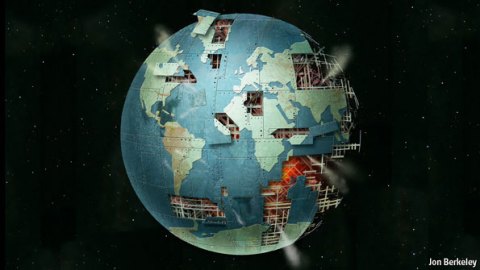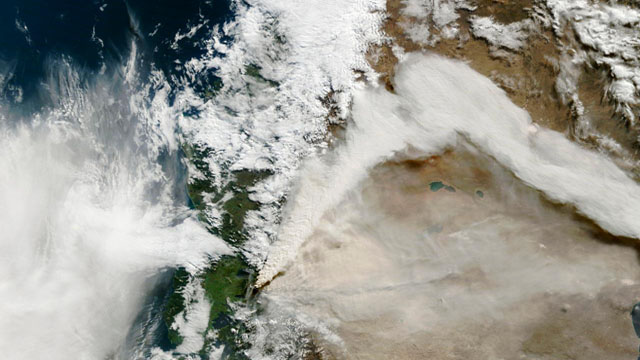The Economist Offers a Sobering Outlook on the Risks and Challenges of the Anthropocene

The Economist last week ran a feature and editorial on the new age of the Anthropocene, a term coined by scientists and now increasingly used by others to refer to the age of humans in Earth’s history, a period where we are perhaps the most influential force on the planet. The realization, says the Economist, represents a major shift in thinking for scientists since it means “treating humans not as insignificant observers of the natural world but as central to its workings, elemental in their force.”
The risks of the Anthropocene include the many associated with climate change but also with ocean acidification and a gamut of other impacts such as those posed by an excess of nitrogen. The biggest fear is one of presumed “tipping points” that would accelerate and fundamentally alter earth systems into a new unknown state.
A natural reaction to the risks posed by the Anthropocene is to call for a dramatic “fix,” and indeed many are likely to be disappointed by the Economist feature and editorial since neither address calls for major social change (a new social movement and worldwide mindset) or non-incremental policy action (such as mandatory caps on greenhouse gas emissions).
Instead The Economist acknowledges the other reality of the Anthropocene, which is the twin challenge of powering a 22nd century world of 10 billion people existing in a somewhat decent standard of living while also simultaneously making the planet more resilient to a severely distressed carrying capacity. To do so, argues the Economist, means applying wisely human intelligence — the very force that created the conditions of the Anthropocene — to a diversity of incremental strategies.
The Economist editorializes that this might mean wisely and cautiously considering forms of geoengineering that remove carbon from the atmosphere, but also innovation strategies that create society-wide electric grids that can take advantage of similarly powerful new solar and/or nuclear energy technologies:
Increasing the planet’s resilience will probably involve a few dramatic changes and a lot of fiddling. An example of the former could be geoengineering. Today the copious carbon dioxide emitted to the atmosphere is left for nature to pick up, which it cannot do fast enough. Although the technologies are still nascent, the idea that humans might help remove carbon from the skies as well as put it there is a reasonable Anthropocene expectation; it wouldn’t stop climate change any time soon, but it might shorten its lease, and reduce the changes in ocean chemistry that excess carbon brings about.
More often the answer will be fiddling—finding ways to apply human muscle with the grain of nature, rather than against it, and help it in its inbuilt tendency to recycle things….
For humans to be intimately involved in many interconnected processes at a planetary scale carries huge risks. But it is possible to add to the planet’s resilience, often through simple and piecemeal actions, if they are well thought through. And one of the messages of the Anthropocene is that piecemeal actions can quickly add up to planetary change.
The Economist editorial and feature offer a sobering, if not alarmingly pragmatic prognosis for some. If anything, The Economist also underscores the equally daunting challenge of how we define and communicate about the collective choices needed to build human and environmental resilience over the next decades.





